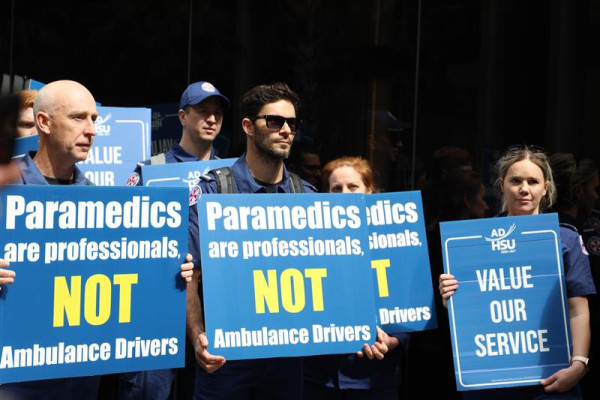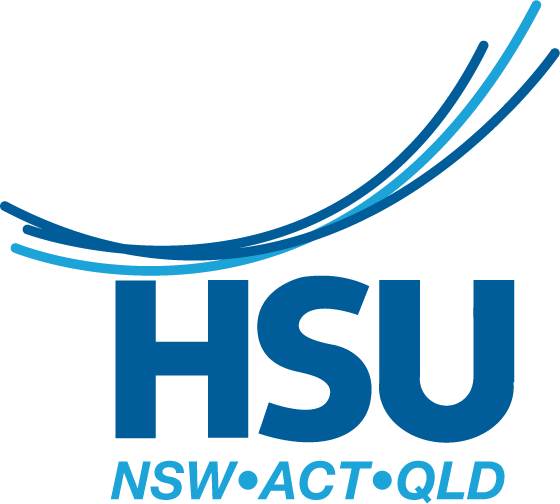Taxpayer Funded Rosters (TFR)
Across NSW, taxpayer-funded paramedic rosters are not being maintained due to NSWA's outdated staffing formula called PAR.
Taxpayer-funded Rosters (TFR) are the number of paramedics the NSW government budgets for, and directly funds. Constantly, New South Wales Ambulance (NSWA) fails to have this number of paramedics on shift.
This means, when a paramedic is sick, injured, or on annual leave, NSWA does not replace these workers, despite desperate community need. PAR also works as a zone-wide average and doesn’t account for over and understaffing in specific areas.
TFR must be maintained to meet community needs. It's that simple.
Currently,
- NSW has some of the worst response times in the country
- Communities are frequently under-resourced
- Large areas are left without resources close by
- Members are frequently missing meal breaks and working end-of-shift overtime
- Members are repeatedly sent to others stations large distances away
- Members are mentally and physically exhausted after shifts
The current system is outdated and inefficient and in need of overhaul - and communities and paramedics are paying the price.
Many stations have fought hard for and won extra resources their areas need. Despite winning these resources, the NSW ambulance (NSWA) executive continuously moves these resources out of their allocated communities to save their budget.
The ADHSU is calling on the NSW Ambulance executive to cover the rosters that taxpayers fund.
 Hear from NSW paramedics, in their words
Hear from NSW paramedics, in their words
The following are accounts gathered from HSU paramedics across the state.
One night shift, Northern Sydney was down three ambulances, leaving only one ambulance to cover a huge suburban area. This single ambulance was busy when a critical case of internal bleeding needed assistance. The only resource available was a manager’s car with no stretcher or equipment, in which the patient was dangerously and uncomfortably taken to the nearest hospital. This left no ambulance resources available if any other incident was to occur that night.
Paramedic, St Ives
Myself and five other paramedics (three ambulances) were sent from Western Sydney to Northern Sydney at the start of our shift. Given the huge number of patients we all had to attend to, none of the three ambulances ever made it to Northern Sydney as we continuously got called to local patients. We were all grossly overworked, and the Northern Sydney paramedics never got the assistance they needed.
Paramedic, Sydney
My partner and I work at Fairfield. In one week, we were sent to Campbelltown twice. The next day, we were sent to Haberfield, leaving Fairfield without a single paramedic on night shift. Working out of other stations is hugely disruptive, and often means we are spending hours at the end of our shift getting home.
Paramedic, Fairfield
Last week I did 10 hours of overtime over three shifts. One of these shifts were 16 hours and I missed both of my breaks. I felt so exhausted and extremely unsafe driving home afterwards, but NSWA doesn't care until someone crashes, or something goes seriously wrong.
Paramedic, Fairfield
NSW driving standards say to take breaks every two hours and warn of being awake for 17 hours. However, NSWA never uphold these standards. Often, we are driving for 16+ hours on shift, not including our drive to and from work. Then we are up the next day, doing it all again. Any rational person can see how unsafe this is.
Paramedic, Sydney
I was working as a single officer and was sent from Macquarie Fields to Bowral for the shift, which is an hour away. We are often forced to work as single officers when NSWA refuses to maintain rosters or put on overtime. This poses a major safety risk and increases paramedic fatigue, on top of the already fatiguing hours of the job.
Paramedic, Macquarie Fields
One night shift, I was made to work single. I was rushed out of my station to back-to-back 1As (cases of highest importance) before I could conduct equipment checks or collect the medications required for my shift. My backup, an intensive care crew also responded to both jobs without medications. It was pure luck that nothing went wrong, and the patient did not rely on the medications we didn't have
Paramedic, Tregear
Campbelltown paramedics are constantly being sent down to the Illawarra region, where we don't have adequate information to deliver patients to different hospitals. At Wollongong hospital, for example, we don't have swipe access cards. If we have a dangerous or agitated patient, we just hope there is someone around to swipe us in. This is a huge safety issue for the patients and the paramedics.
Paramedic, Campbelltown
Being sent to different areas of Sydney every shift means I am disconnected from the communities I am serving.
Paramedic, Macquarie Fields
In Penrith, we are constantly understaffed during night shifts. Every time this happens, we are told that backup staff are being sent from other parts of Sydney. However, they never make it to our station because they get caught up with other jobs. All of us are left overworked, when NSWA could simply bring someone on overtime to fix the issue.
Paramedic, Penrith
Western Sydney paramedics are always being moved out of their area despite being one of the busiest areas for 000 calls. Often, the whole 20km region between Liverpool and Campbelltown hospitals is left underserviced, even though it is in the middle of suburban Sydney.
Paramedic, Macquarie Fields
One night shift, my partner and I were split up and rushed out to different jobs, due to understaffing. I ended up having to drive a long distance by myself, on a rural pitch-black road with no phone or radio reception. It was pure luck that nothing went wrong as there were two unwell patients and only one paramedic.
Paramedic, Tregear
Our Latest
Find more in this section:
